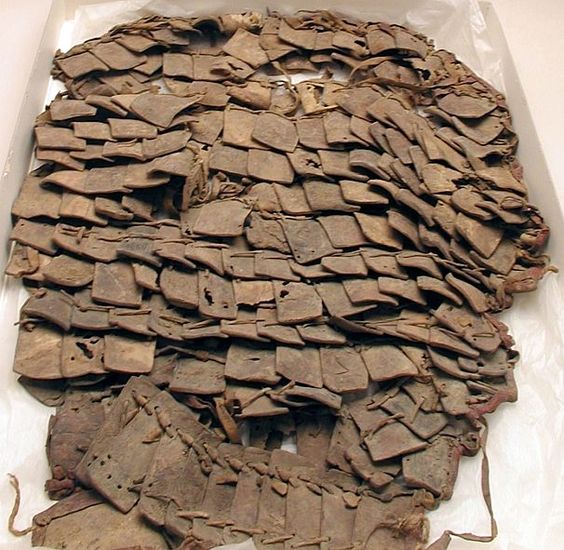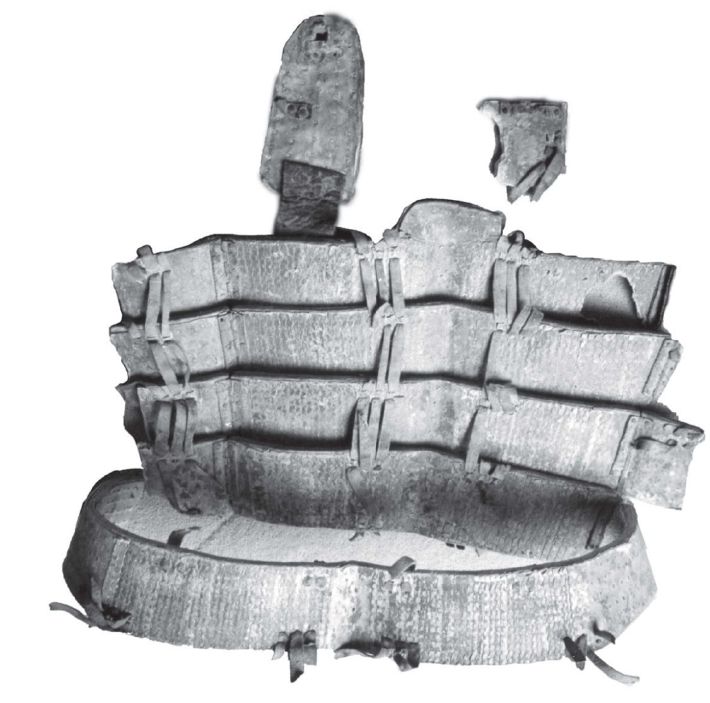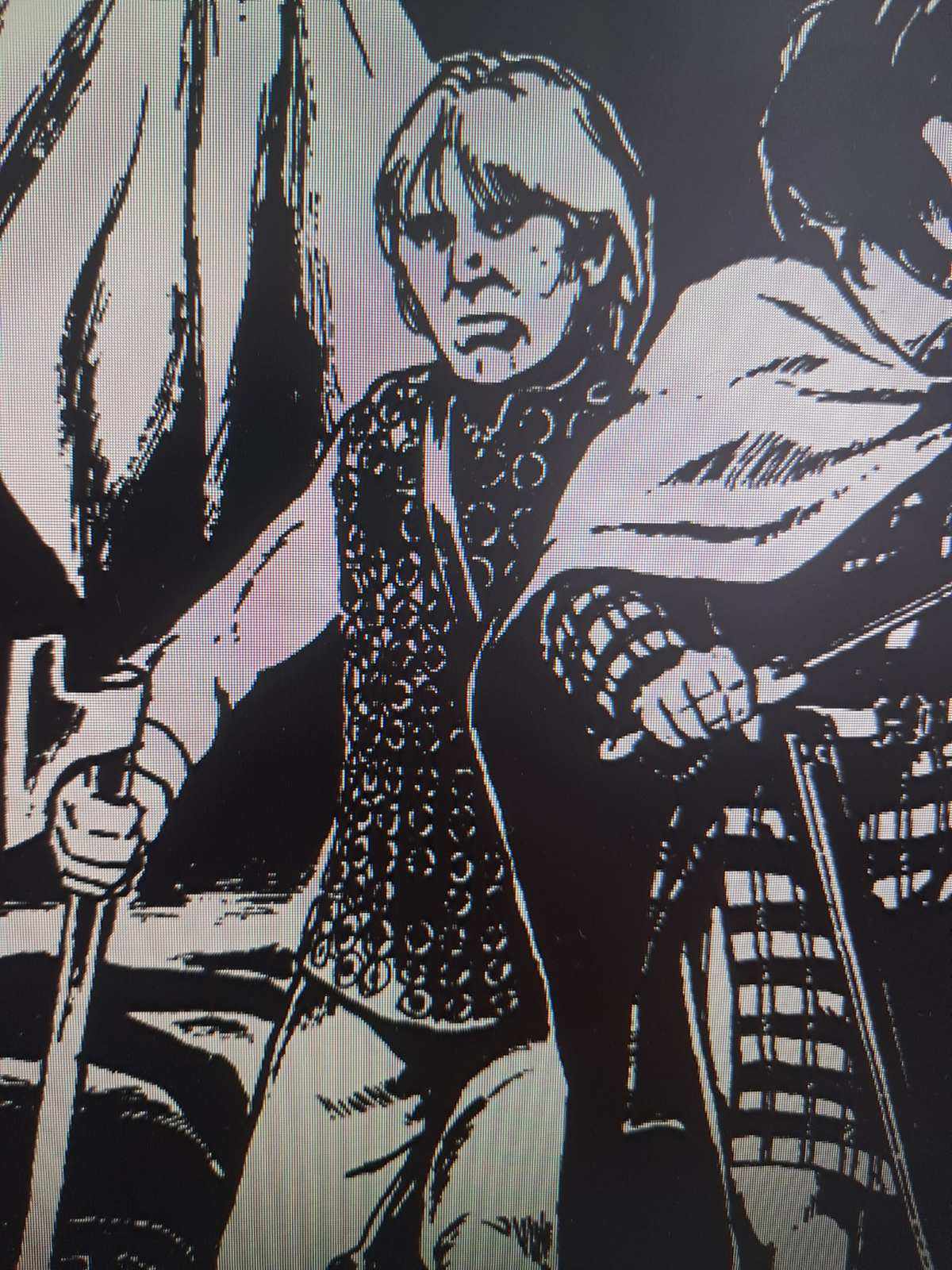Historically-accurate chainmail bikini?:D
- Thread starter sandro chronicler
- Start date
-
We have updated our Community Code of Conduct. Please read through the new rules for the forum that are an integral part of Paradox Interactive’s User Agreement.
You are using an out of date browser. It may not display this or other websites correctly.
You should upgrade or use an alternative browser.
You should upgrade or use an alternative browser.
Some new finds.

Leather armor from Syria, 323 BC - 256 AD.


Leather armor and helmet, too from Syria, early 14th.c.

And this is the most interesting one, possibly real medieval studded leather armor, supposedly late 14thc, found in Estonia.

Leather armor from Syria, 323 BC - 256 AD.


Leather armor and helmet, too from Syria, early 14th.c.

And this is the most interesting one, possibly real medieval studded leather armor, supposedly late 14thc, found in Estonia.
- 1
How so? Besides ornateness of tangu empire and dayak's supersaiyan hair
View attachment 1170276
And this is the most interesting one, possibly real medieval studded leather armor, supposedly late 14thc, found in Estonia.
Studded leather?! That must be fake right?
Why the studs? What function did those serve?
- 1
Fashion, I would guess. Never forget looking good is a factor, too.Studded leather?! That must be fake right?
Why the studs? What function did those serve?
- 1
Seems like the usual, i.e. it ain't the "studded leather" of AD&D fame, but rather studs to hold on to metal strips (inside the leather) and studs to hold on to straps and buckles (lost, but an impression of a buckle remained)Studded leather?! That must be fake right?
Why the studs? What function did those serve?
- 1
- 1
Okay, leather lamellar?
More lamellar.View attachment 1170269
View attachment 1170270
Leather armor and helmet, too from Syria, early 14th.c.
It can be the remnants of studs with the metal strips worn off, rather than actual studded leatherView attachment 1170276
And this is the most interesting one, possibly real medieval studded leather armor, supposedly late 14thc, found in Estonia.
Seems like the usual, i.e. it ain't the "studded leather" of AD&D fame, but rather studs to hold on to metal strips (inside the leather) and studs to hold on to straps and buckles (lost, but an impression of a buckle remained)
Now that the both of you mention it, it does seem like there's a few bits of the metal strips remaining - the thin strips must have corroded and broken off before the studs themselves would.It can be the remnants of studs with the metal strips worn off, rather than actual studded leather
EDIT: Though the sheer number of studs still seems like an aesthetic choice, rather than practical one.
Aside of being even more flashy then historical european gear, it's quite light (mostly because of climate), consisting mainly from gorgets/half-cuirass and belts. Wery common in old-school fantasy. (one example are in first entry in this wery page)How so? Besides ornateness of tangu empire and dayak's supersaiyan hair
Dude, just two pages ago in this thread there was examples of actual historical studded armor. Mostly not on leather, and this bracers are the only exampless actually from medieval Europe.Studded leather?! That must be fake right?
Why the studs? What function did those serve?
Interestingly, this one (unlike later examples) was made from soft leather, not hardened one. However, as was shown here previously, soft leather armor was widely used in some periods of history.Okay, leather lamellar?
In description from PDF above it's said that only about half of stud rows was helding strips.Now that the both of you mention it, it does seem like there's a few bits of the metal strips remaining - the thin strips must have corroded and broken off before the studs themselves would.
Last edited:
Sorry for long absence.  Alot happened.
Alot happened.
Another interesting thing from era of early reconstruction of medieval geer, when early scholars seen overtly stylised depictions of chainmail

they assumed that this must be another type of armor, with rings stitched on leather/fabric base, ring mail. Like cheap alternative to proper chainmail:


Now we know that this (most likely) wasn't the case. However.. Here we have example of Tlingit (native alaskan) armor, made from chinese coins they get from fur trade. Reportedly was surprisingly effective. Allegedly even provided some protection against (shitty cheap-ass) mushkets of russian colonisers.


Here are similar garb of native americans

And this is from Sudan, probably from late 19th century

Wos something like this used in Europe? Surprisingly, yes. Eyelet doublet, this one from 16th century:

Example of historical dog armor of same type:

Details and reconstruction:


Eyelet doublets most likely first appeared in mid 15th century, so yes, ring mail actually existed in medieval Europe, although in 15-th century, not 11th))
Another interesting thing from era of early reconstruction of medieval geer, when early scholars seen overtly stylised depictions of chainmail

they assumed that this must be another type of armor, with rings stitched on leather/fabric base, ring mail. Like cheap alternative to proper chainmail:


Now we know that this (most likely) wasn't the case. However.. Here we have example of Tlingit (native alaskan) armor, made from chinese coins they get from fur trade. Reportedly was surprisingly effective. Allegedly even provided some protection against (shitty cheap-ass) mushkets of russian colonisers.


Here are similar garb of native americans

And this is from Sudan, probably from late 19th century

Wos something like this used in Europe? Surprisingly, yes. Eyelet doublet, this one from 16th century:

Example of historical dog armor of same type:

Details and reconstruction:


Eyelet doublets most likely first appeared in mid 15th century, so yes, ring mail actually existed in medieval Europe, although in 15-th century, not 11th))
Last edited:
- 2
- 1
- 1
- 1
While researching history of armor i found another curious example. From late 18th century US and British marines used leather collars as neck protection in melee. This was origin of nicknames for marines - Leathernecks (american) and Bootnecks (british).
_001.png)


This collars was poorly designed and highly uncomfortable to wear. British marines soon discontinued it's use, later this collars was sometimes issued as punishment . While american ones continued to wear it's until late 19th century.
. While american ones continued to wear it's until late 19th century.
_001.png)


This collars was poorly designed and highly uncomfortable to wear. British marines soon discontinued it's use, later this collars was sometimes issued as punishment
Last edited:
- 2
- 1








